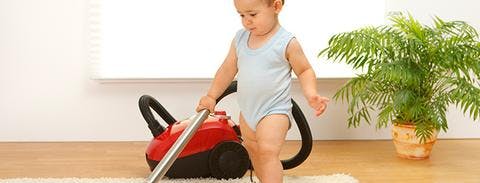Does hay fever affect your sleep in Spring?

While most of us love Spring, including the fresh flowers, pretty butterflies and warmer weather, for some people who suffer from hay fever it’s the worst time of the year. Hay fever, or allergic rhinitis, means an allergy that affects the nose. The symptoms are similar to having a cold including sneezing and itching, runny nose, sinus pressure and watery eyes. However unlike a cold, which is caused by a virus, hay fever is caused by a reaction to an allergen.
Hay fever often occurs in Spring, as pollens and airborne allergens from plants or fungi are at their peak. However, hay fever can actually occur at any time of the year, as some people are allergic to other allergens such as dust mites and animal hair.
For many people who suffer from hay fever, the symptoms can be severe and persistent including sweats, headaches, facial pain, itchiness in throat, nose and ears, and loss of smell and taste. These symptoms can then lead to tiredness, irritability and insomnia, as it’s hard for some hay fever sufferers to get a good night’s sleep.
Interesting facts:
1. Hay is hardly ever an allergen.
2. Hay fever does not cause a fever.
If hay fever affects your sleep, these 5 tips may help you get a better sleep. Of course, if they don’t, we highly recommend you visit your doctor, pharmacist or sleep specialist. They may have other suggestions or they may prescribe medication to help you.
#1 vacuum often

Vacuum as often as you can, particularly in Spring. If possible, remove carpet in your house (and opt for floorboards or polished concrete) as pollen and other allergens are easily trapped in the thick weaves of carpet. Also, when purchasing a vacuum cleaner or air cleaner, try and get one with a high rating for its ability to remove allergens from carpet and the air1.
#2 Wash your pets thoroughly
As pets can carry pollens, and their fur or hair can be an allergen, it’s important to wash them regularly and thoroughly. It’s also a good idea not to let them sleep in the same room as you1.
#3 Update Your Mattress and Pillow
If your hay fever is caused by dust or dust mites, it’s a good idea to update your mattress and pillows as often as is practical. Mattresses usually need replacing after 7-10 years and pillows after 1-2 years. Alternatively, cover your mattress, pillow and quilt with a dust mite resistant cover, and wash these every two months in water hotter than 55°2.
#4 Grow friendly plants
When choosing plants for your garden, opt for plants that are pollinated by birds or insects, rather than plants that release their seeds into the air. If you’re not sure of the difference, talk to a plant expert at your local nursery. Another idea is to replace your lawn with bricks or pavers or opt for synthetic grass, which looks great and is soft to lay on2.

#5 Nose plug
To stop pollen from getting up your nose, which is what causes you to sneeze, try smearing a small amount of petroleum jelly (available in supermarkets and chemists) just inside your nose. Hopefully it will collect any specks of pollen or other allergen before it hits the lining of your nose3.
It’s also important to go to bed at a reasonable hour. Being sleep deprived can affect your health, which may reduce your body’s ability to defend itself against allergens. Also, before you go to bed, it’s a good idea to wash your hands and face thoroughly or, better still, have a shower. This can help remove any pollen or allergens that have gathered onto your skin. Make sure you give your nose a good wash as this is where the pollen starts to work its hay fever magic1.
Of course, if you’d like to discuss a new mattress or pillow, or need tips on how to care for the mattress or pillow you have now, visit your local Snooze store and talk with our sales people. It’s amazing what a little Snooze can do.
References:
3. BBC News